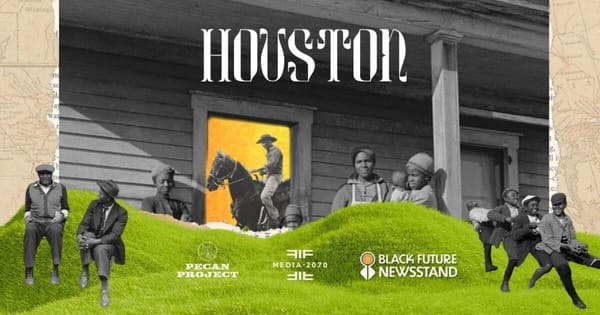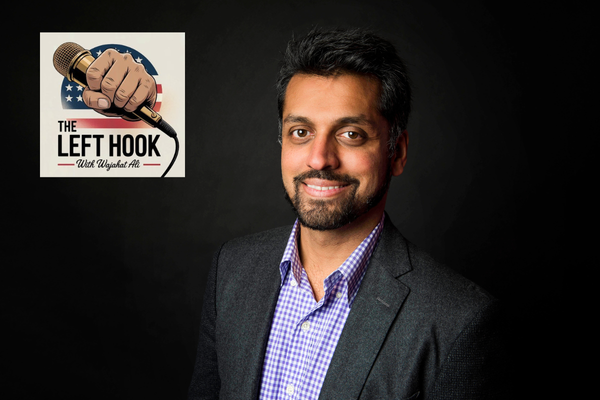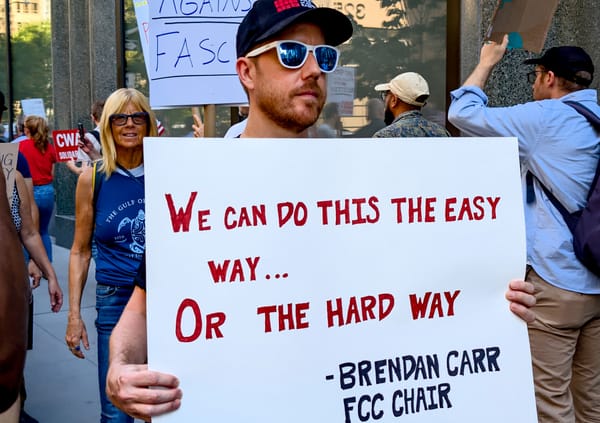How the Pacifica Network Is Keeping Journalists Safe
We need independent journalism more than ever, and that means protecting reporters in the streets
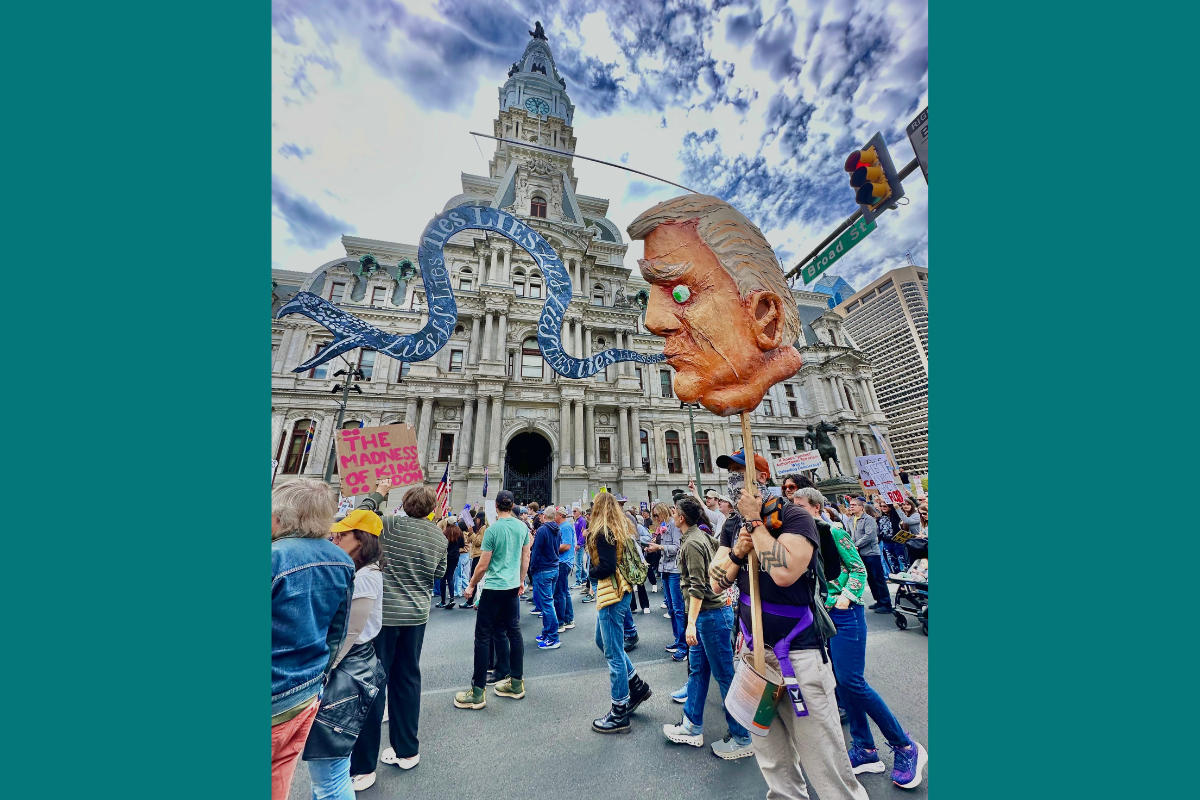
Twice this year, the Pacifica Network coordinated national broadcasts of the No Kings protests with a team of local reporters representing affiliate community radio stations from across the United States. These broadcasts included live local coverage from reporters who were embedded in these historic mass mobilizations, which more than 12 million people took part in.
Incorporated in 1946 as the first public radio network in the United States, Pacifica remains one of the world's oldest listener-funded radio networks. With more than 200 affiliate members across the U.S., Pacifica plays a vital role in providing community-rooted coverage of news and public affairs.
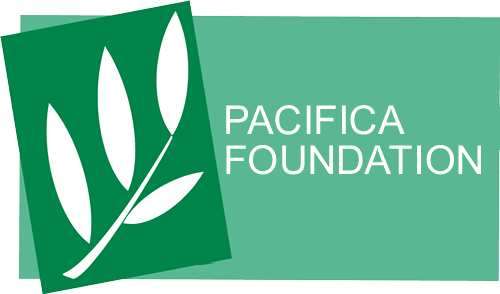
Prior to the national broadcasts, Pacifica affiliate members like Lisa Loving in Oregon felt it was important to provide legal and safety training to more than two-dozen local correspondents participating in the collaboration due to the increasing number of journalists being detained, injured and arrested while covering protests in Chicago, Los Angeles and Portland.
The network has seen its fair share of violence and attacks on its affiliate stations and its staff over the past 80 years. In Pacifica’s early days, it was a prominent target for McCarthyism because it was one of the few platforms for free speech and regularly featured the views of activists in the peace movement. In 1970, the KKK firebombed Houston affiliate KPFT twice. In 2018, a masked gunman shot a DJ at WORT studios in Madison, Wisconsin, and Democracy Now! co-host Amy Goodman was arrested while reporting live at Standing Rock.
As a reporter for local Pacifica affiliate WPPM LP-FM, I participated in the national broadcasts of the No Kings protests and worked with Pacifica to provide live coverage from Philadelphia. During my 10-plus years collaborating with Pacifica, it was the first time I received legal training and support for protest coverage. And it made me wonder — why now?
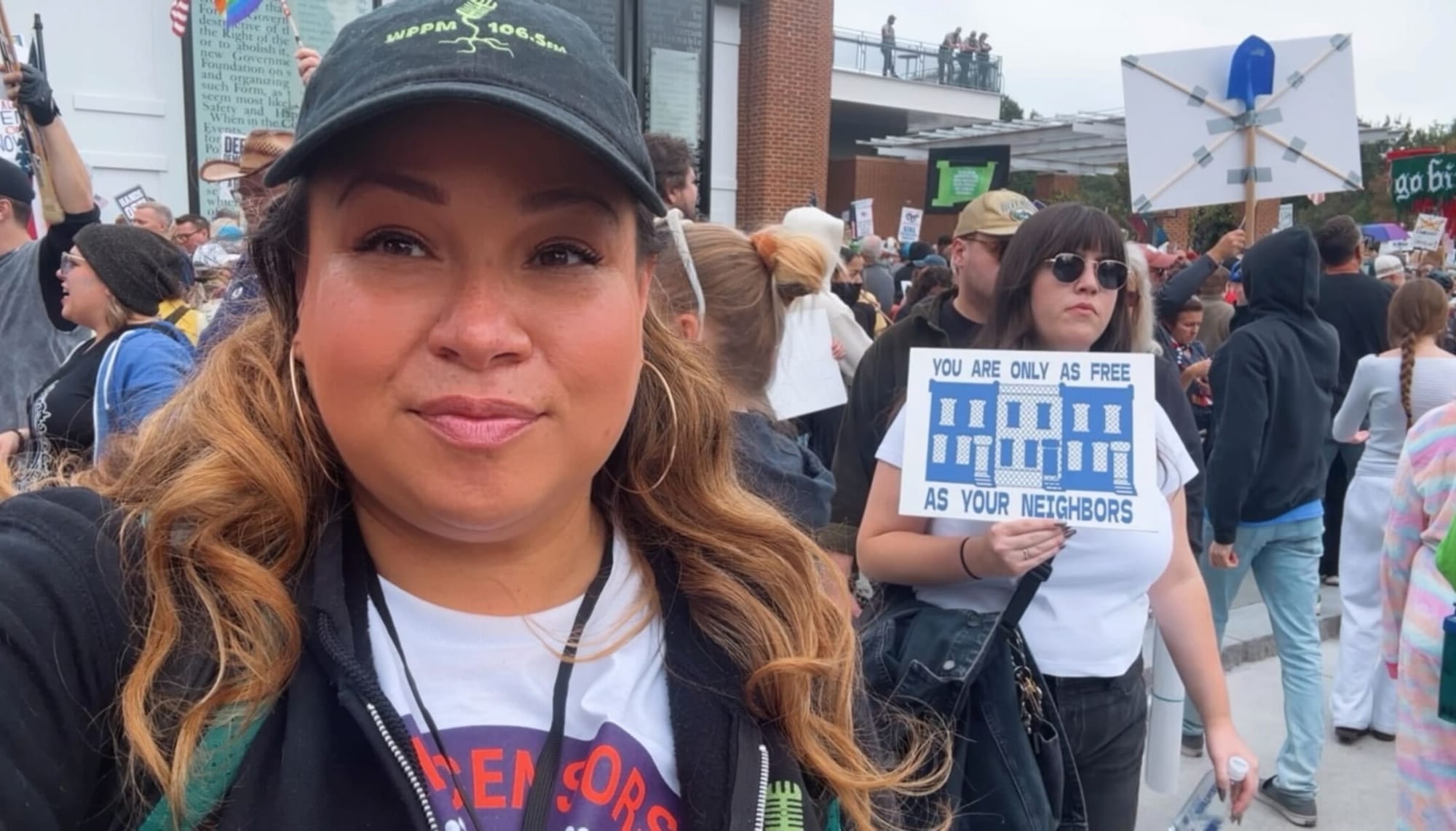
I connected with Loving, author of the book Street Journalist, to hear more about Pacifica’s strategy for keeping reporters safe and to understand why it decided to take action at this time. Loving, who formerly worked with the Pacifica Affiliates office, helped coordinate the reporters on the ground who were covering the No Kings protests.
Vanessa Maria Graber: Why did Pacifica decide to provide additional training and support to its reporters?
Lisa Loving: I started working with Pacifica last year because we wanted to create a new generation of independent reporters all over the United States and in Canada to bring Pacifica itself back to its legendary place as a media outlet. Last year, we started doing these Report the Vote trainings. We started by bringing in a whole bunch of people from affiliates all over the country and just doing training on how to cover the elections. This year, we’ve been working to elevate newsrooms — small and large — all around the country. This includes Pacifica network-affiliated newsrooms, and some of those are from NPR-hybrid stations and some are people at Low Power FM stations. Bringing those two groups together is an incredible achievement.
I am from Portland, Oregon, so the first time I was beaten by cops, in the street, was in 1990. Portland also has a tradition of protest, a tradition of civil disobedience — sometimes [it’s] nonviolent and sometimes it’s not so nonviolent. As we began covering what’s happening in local communities this year, it became clear that the federal government was exerting a stranglehold on civil society. When we saw what was starting to happen in Los Angeles a couple of months ago, where ICE, Border Patrol and even their police and sheriffs started shooting rubber bullets and these beanbags at protesters, it made me start thinking, we need to take extra steps to make sure not only that our reporters are safe in the field, but that they’re being supported.
When you see the role the Pacifica Network wants to play in the national media, we need to take extra steps because we’re onboarding and bringing into our community nontraditional journalists. As I began discussing this with my manager, Ursula Ruthenberg, I said, “We need to tighten up what we’re doing because these people deserve better.”
These individuals, like yourself, are the future of journalism. Not only do we want to make sure they’re safe, but we want to make sure that our people do not experience post-traumatic stress disorder, which could actually totally affect how journalists do their job. So really, this is part of a dedication that goes to the heart of Pacifica to bring back the strength we had years ago in terms of news media and community reporting, but also try to support our crews for the future.
VMG: Can you describe some of the support Pacifica provided for the network-affiliate reporters?
LL: Bob Hennelly, who is interim general manager at WBAI in New York, tapped a former attorney with the American Civil Liberties Union to come in and just give us a sense of what current case law is. There actually are new laws, rules and regulations that have been passed in different parts of the country and judges’ rulings too. Starting with an umbrella overview of understanding the situation by the American Civil Liberties Union, we also took the steps to quantify our reporters in the field and make sure that they had not just press passes, but documents that we created to prove that that person was on assignment by the Pacifica Radio Network for the newest rules, regulations, laws and case law about journalists in the field when it comes to protest reporting.
Can you prove that the reporter was on assignment for a news outlet? If you are not on assignment for a news outlet, that doesn’t make you any less of a journalist. But the purpose of what we’re trying to do is to create a safe space for independent journalists across the country. We wanted to give them a press pass that they could show in the field.
They also signed an agreement between Pacifica and its contractors, which articulated to the independent reporters on the ground about what we expected from them and what they could expect from us, and made it official that we have a legal agreement. If those reporters are interfered with by the law or they’re drawn into the legal system in some way, they had legal proof that we were behind them.
We did at least three trainings and a legal clinic in the past four months for protest reporting, and one of them was on how to keep yourself safe. Pacifica is not expecting our reporters to go head to head with teargas-lobbing goons in the street, but I created a standard for what would make you leave the scene. You have to decide what you will do if it’s unsafe.
I, myself, personally, was on a hotline throughout that day on October 18, so that if anybody in the field had a problem, they could contact me directly. A few people did, although nobody had a fear of violence — I want to be clear about that. It was more like people who wanted to know how they could contact the mothership if they had a great interview, or something like that. But to have these connections from sort of a nexus of the entire Pacifica Foundation to support you, and all the other reporters in the field, I think that was really important because again, as a society with these protests, we’re sort of waiting for the other shoe to drop.
VMG: What do you mean by that, “waiting for the other shoe to drop?”
LL: In 2020, in my city, Portland, Oregon, we had 100 nights of protest in a row behind the Black Lives Matter movement, and it was definitely not peaceful. The state is who brought most of the violence, and a lot of the journalists who emerged during that time, everyday people who just went downtown with their phones — a lot of these people wound up being traumatized for years to come because of the way the police treated them.
There’s going to be a point when that’s going to shift, and we really need to stay vigilant for that, because we don’t want any of our reporters to be injured or arrested. I cannot stress how important it is that we make sure that our reporters do not get injured and traumatized, because that has a long-term impact. That’s so important, but we don't even think about it. There’s going to come a moment when the protests turn violent. It’s going to happen. It’s inevitable.
VMG: What’s next for Pacifica and these national broadcasts?
LL: There’s even a bigger vision happening right now. Pacifica thought that this livestream on October 18 was very successful. We had a couple of technical glitches, but not very many, and we were able to set a table for people from all over the country as listeners, but also as participants. I love that the bigger thing that’s happening in the background is we are quantifying, like how to figure out a national nightly-news broadcast in which all of you and all of the independent reporters could be stringers and participants in this broadcast. So our goal really is to build on these national livestreams that the WBAI station in New York is really, really good at. There’s another thing that’s in the pipeline.
We’re talking about the possibility of doing more call-in shows that are national, which, of course, KPFA in Berkeley has done, but that is a big deal to figure out how to take these protest livestreams and then turn them into something even bigger that could be interactive with listeners.
About the author
Vanessa Maria Graber is the journalism and media education director at Free Press. She creates resources for newsrooms and trains journalists about civic-journalism best practices, community engagement and meeting community-information needs. Follow Vanessa Maria on Instagram @newsjawn.
Teamwork
Updates and highlights curated by the Pressing Issues team
Free Press’ Future of Journalism team published a new guide that focuses on how to evaluate legislative work about local journalism across the country.
“Policy conversations need to be forward-looking and rooted in the needs of the public, not necessarily the needs of the legacy journalism industry,” the guide notes. “We should focus on how the collapse and consolidation of the commercial journalism market has impacted civic and democratic health — and consider what kind of media system we need in the future to have a thriving democracy. This allows for more flexible thinking on the policy front, lays the groundwork for broader coalitions and points us toward solutions that would allocate public dollars toward the public interest.”
Give the full guide a read.

The kicker
“In the 1950s and 60s, McCarthyism forced the Pacifica Radio Network to define itself less as an institution of humanist dialogue — the goal of its founders — and more as a defender of the right of the individual to speak. In the torturous course of this transition, ‘alternative radio’ was born along with a difficult question: could listener-sponsored radio live by dissent alone?” — Matthew Lasar, from Pacifica Radio: The Rise of an Alternative Radio Network
Editor’s Note: Pressing Issues will not publish on Veterans Day, Nov. 11. We will be back on Nov. 14.
